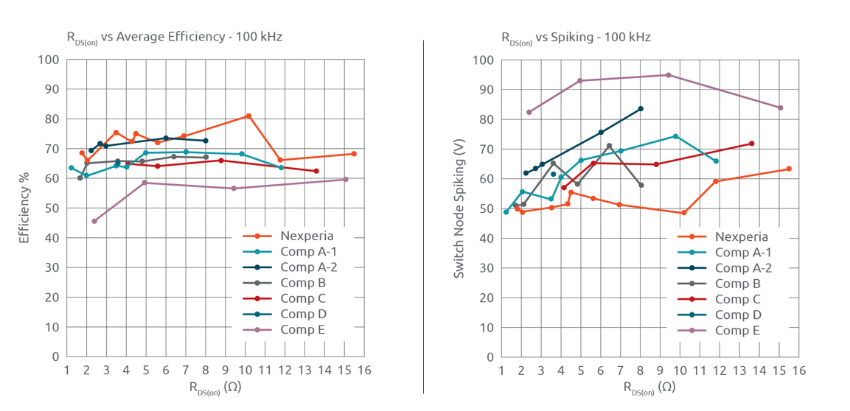When it comes to selecting a MOSFET, the headline figure most engineers look for is the RDS(on) value. That’s because we are so used to thinking the lower the RDS(on) the better. But while it remains a key selection parameter, for an increasing number of switching applications RDS(on) no longer provides the complete picture. In fact, for some applications depending on the MOSFET’s switching parameters a slightly higher RDS(on) value may well result in better efficiency and performance.
For some time Nexperia has been investigating the role of Qrr on MOSFET switching performance (Qrr: overlooked and underappreciated in efficiency battle). The result has led to questions arising around the accuracy of the traditional MOSFET Figure of Merit (FOM) – Is today’s accepted MOSFET Figure of Merit still relevant?.
What we increasingly see is that as applications switch faster and push for ever more performance and efficiency, switching losses (combination of Qg and Qrr) and switching frequency play a greater role in overall MOSFET performance and efficiency. So rather than simply choosing a MOSFET based on RDS(on) alone, designers need to dig a little deeper. Clearly there are devices that have been optimized purely for RDS(on) but given the limitations of today’s silicon MOSFET technology that does often come at a cost in other areas.
NextPower 80/100V – smaller, faster, cooler
By extending the portfolio of NextPower 80/100V low Qrr devices in LFPAK56 and introducing a new portfolio of LFPAK88 variants, Nexperia is offering engineers working on power supply, telecom and industrial designs a slightly different choice. Devices that feature low body diode losses (Qrr down to 50 nC), lower reverse recovery current (Irr), lower voltage spikes (Vpeak), reduce ringing resulting in optimized dead-time. While also ensuring a minimum RDS(on). In addition, by switching from traditional products to devices in surface-mount LFPAK offers over 50% footprint reduction compared to TO-Leadless (TOLL) packages, with the added benefits of full copper-clip technology.
Avoid EMC issues
Perhaps the most noticeable issue when it comes to many of today’s designs using MOSFETs is EMC, even though it is often addressed last. One measure of this is to look at RDS(on) versus switch node spiking voltage. Typical DC/DC or AC/DC power conversion happens between 70 and 130 kHz, but in extensive testing Nexperia has pushed all our LFPAK56(E) products from 100 kHz up to 500 kHz (and 100- 300 kHz for the LFPAK88).

The results show that at 100 kHz, NextPower 80/100V devices offer the lowest spiking products available, as well as being on par with industry leading efficiency. This gives the designer the choice to ensure efficient switching with minimal losses, while guaranteeing designs will pass EMC testing without any costly board redesigns.
Interactive datasheets provide an insight
Naturally as the interaction between parameters grows in complexity it can be easier to simply focus on a single parameter, like RDS(on). Through our electrothermal models and interactive datasheets, Nexperia hopes to simplify that thought process so engineers can quickly gain insight into how a selected product would operate within their specific design specifications.
Simply head over to the NextPower 80/100V family page for more information